Anchors Away: Ulysse Nardin Makes The Anchor Escapement Viable For The Wristwatch
At Baselworld, Ulysse Nardin did something that I am not sure I have yet seen a watch company do: the Le Locle-based brand’s main introduction for the fair was not a watch.
It was a component. “Just” an escapement; not even a whole movement.
Of course, this sort of debut spotlights the importance of the mechanism, which was certainly the intention.
No stranger to new escapements
Ulysse Nardin is, of course, no stranger to new escapements. When it released the Dual Direct escapement in 2001, there was nothing even remotely like it in the industry. Introducing it within the confines of the Freak’s genuinely novel framework only enhanced the “newness” of it, too. The Freak, of course, has gone on to become the brand’s mini lab for new technologies and materials.
This is probably one reason why the introduction of the new Ulysse Anchor Escapement was so surprising; I would have expected it to come together with the haptic treat of a full horological experience, i.e. a timepiece to touch, feel and enjoy.
But with or without a complete watch, I have to tip my hat: few companies are able to contribute so many technical revolutions to an industry within the span of just one lifetime.
Not for portable use
This brand-new, never-before-seen silicon escapement was christened the Ulysse Anchor Escapement. But before we go further, let’s head back a few hundred years to learn what the anchor escapement was historically all about.
Invented to further improve isochronism, the anchor escapement was first used in pendulum clocks as the successor to the verge escapement. Most likely it was Joseph Knibb who built the first working example into a clock, working from research published by Christiaan Huygens and Robert Hooke on oscillation systems (which eventually led to the invention of the balance spring).
However, the anchor escapement, like the detent escapement, was not considered practical for use in portable timepieces such as wristwatches because, while it has advantages in terms of precision, its disadvantages include recoil and friction. Urban Jürgensen & Sønner presented a pivoted détente escapement practicable for use in a wristwatch movement in 2011, so it was probably just a matter of time before somebody did the same for the anchor escapement.
And it now appears that Ulysse Nardin has done just that.
Flying Anchor
The flexibility of silicon has allowed Ulysse Nardin to avoid the recoil problems inherent to the original anchor escapement; in fact without the material’s elastic properties, this new component could not have been realized. The brand had already patented the invention in 2007, but it has taken all this time – seven years of fruitful experimentation and research – to get it to the desired point.
The principle of it is not wholly unlike Girard-Perregaux’s Constant Escapement with its elastic buckling element. Also like that particular component, it looks absolutely sensational from a technical-visual standpoint.
A circular silicon frame does away with the need for a lever; the pallets are simply suspended by perpendicular arms. The snapping action of the buckling blade springs ensure that very little friction is generated and, according to the company, there is virtually no energy loss.
This radical new component continues Ulysse Nardin’s almost aggressive bid for independence. In fact, the company states that it would like to have 95 percent of its entire production brought in-house by 2017.
The watch that goes along with the new flying anchor escapement probably won’t be released until next year. While we have no idea what it will look like at this stage, I am certain of one thing: it will be like nothing we’ve ever seen before.
For more information, please visit www.ulysse-nardin.com.

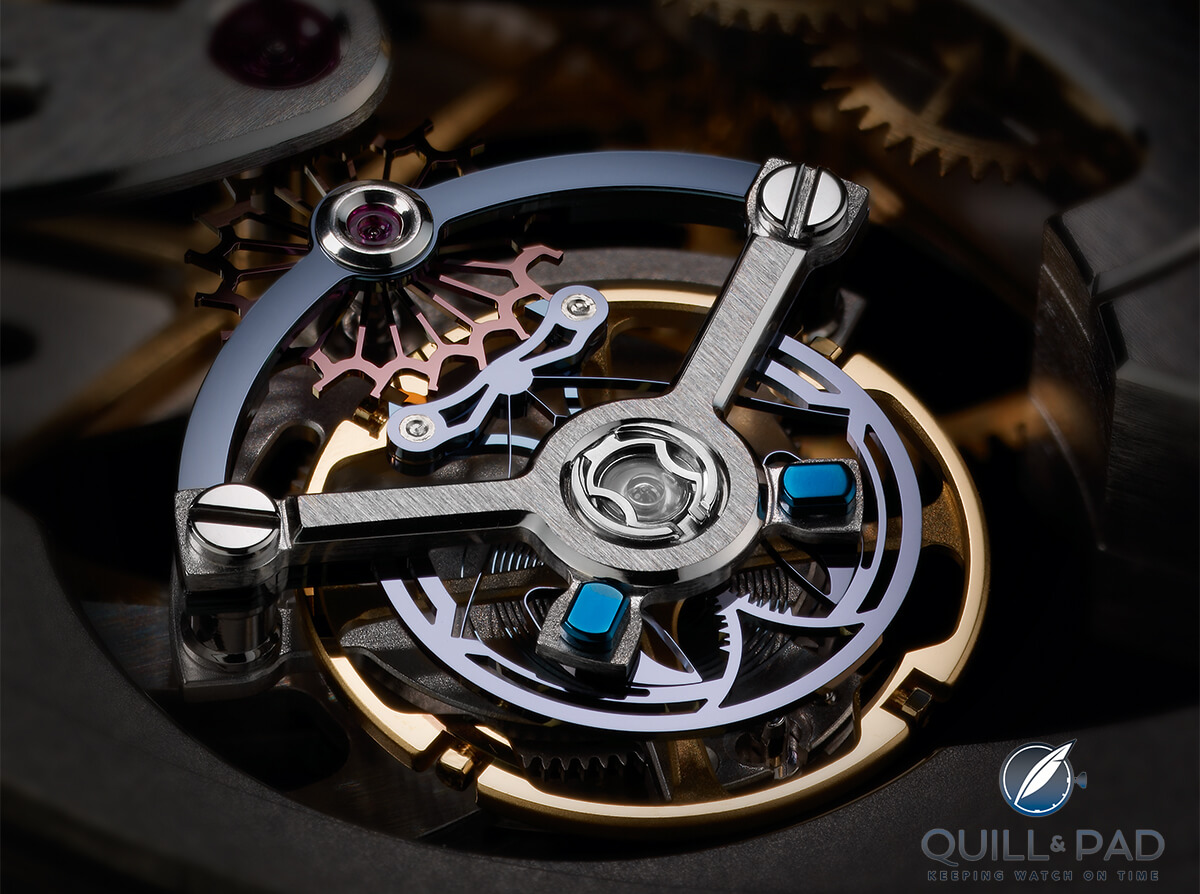
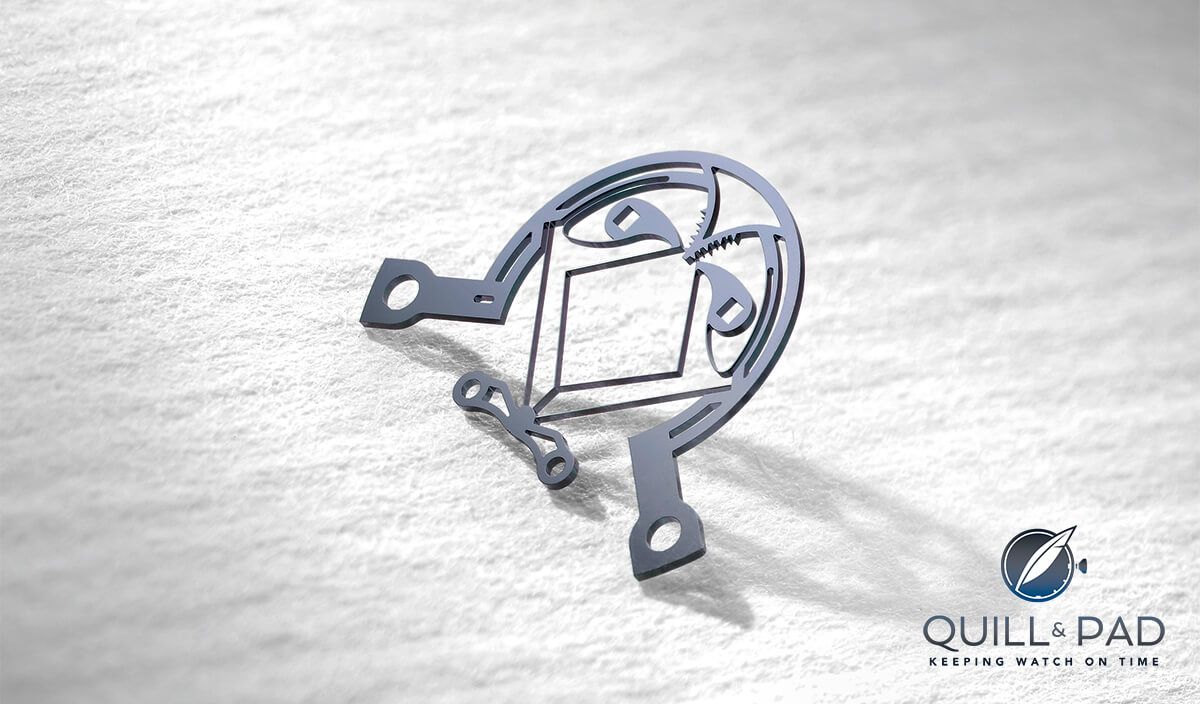
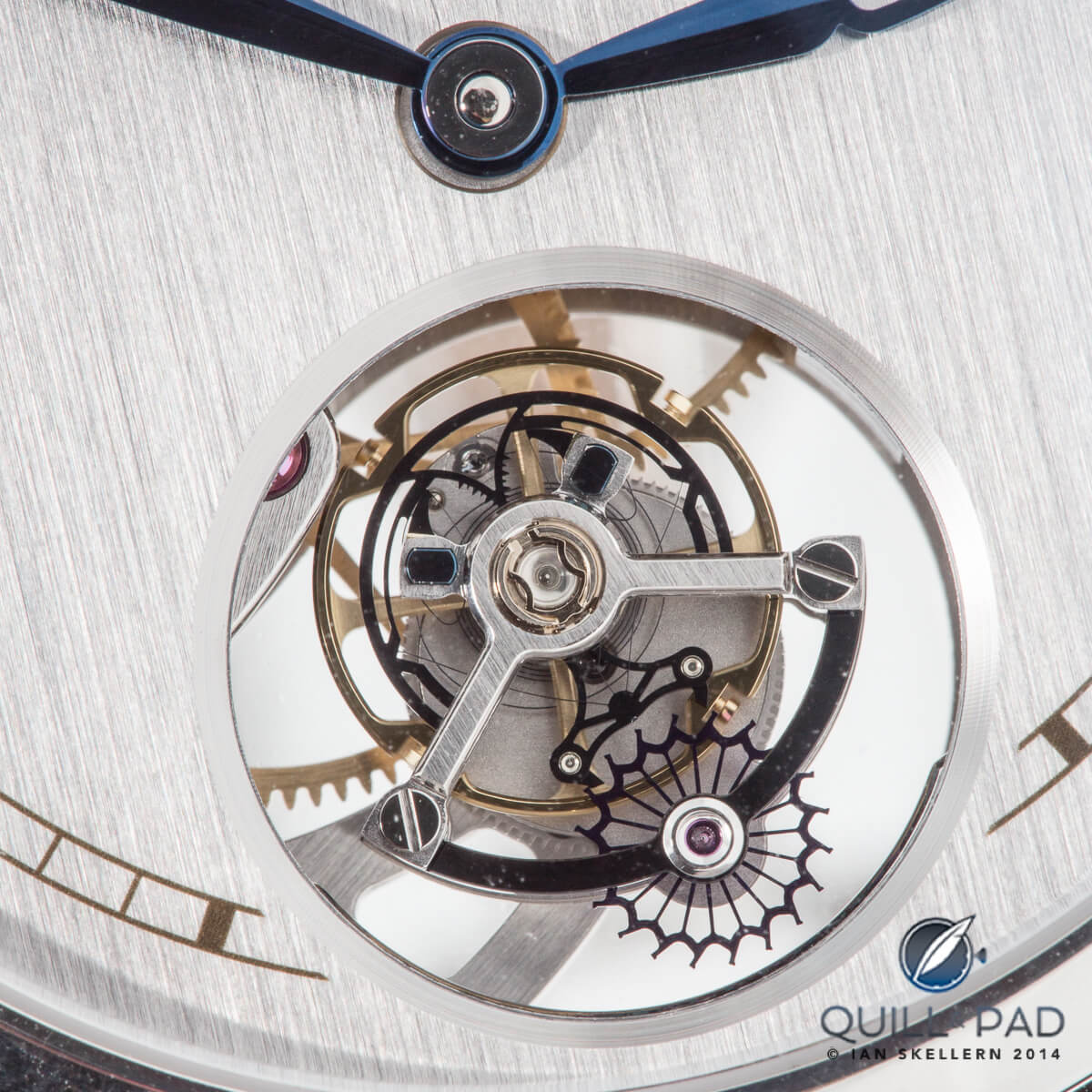
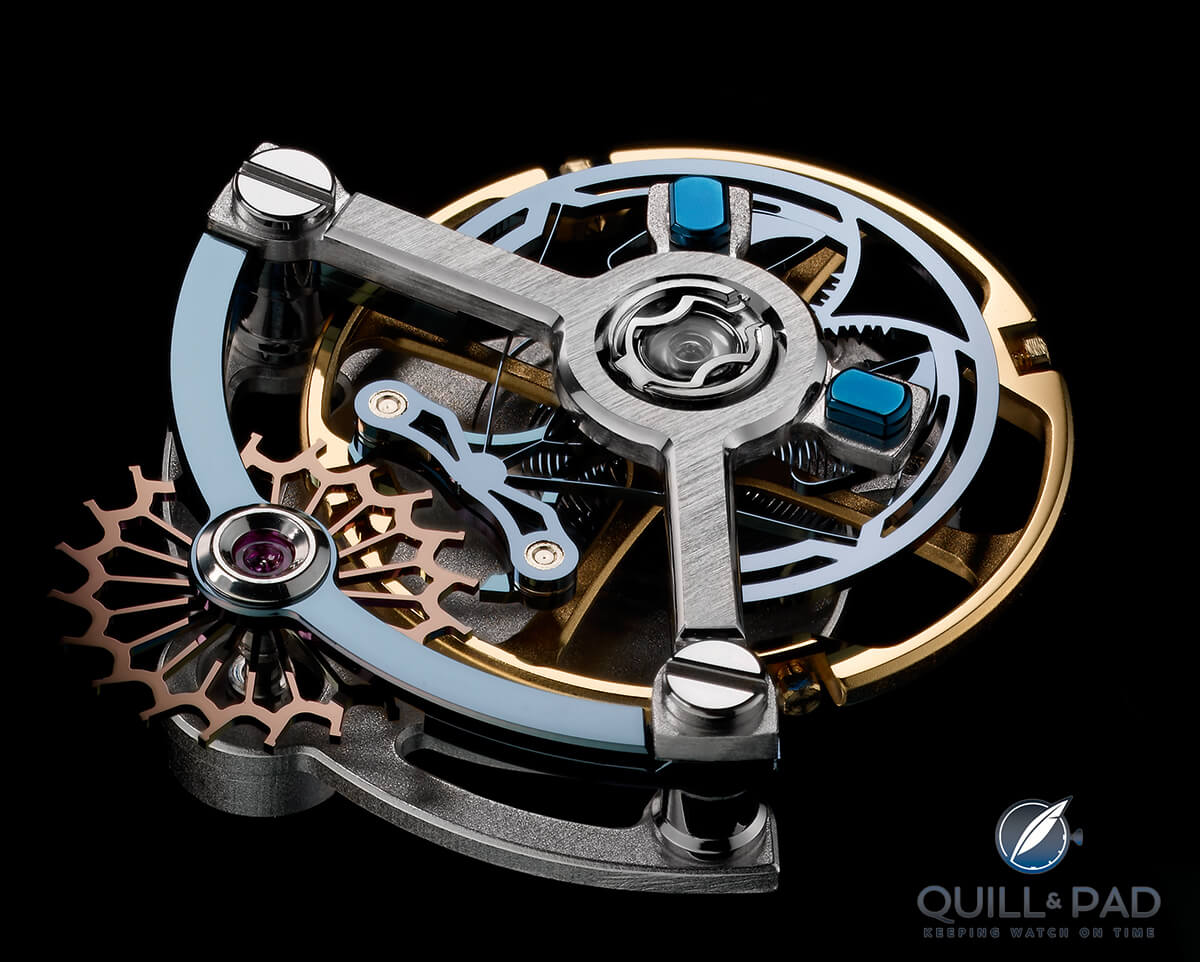
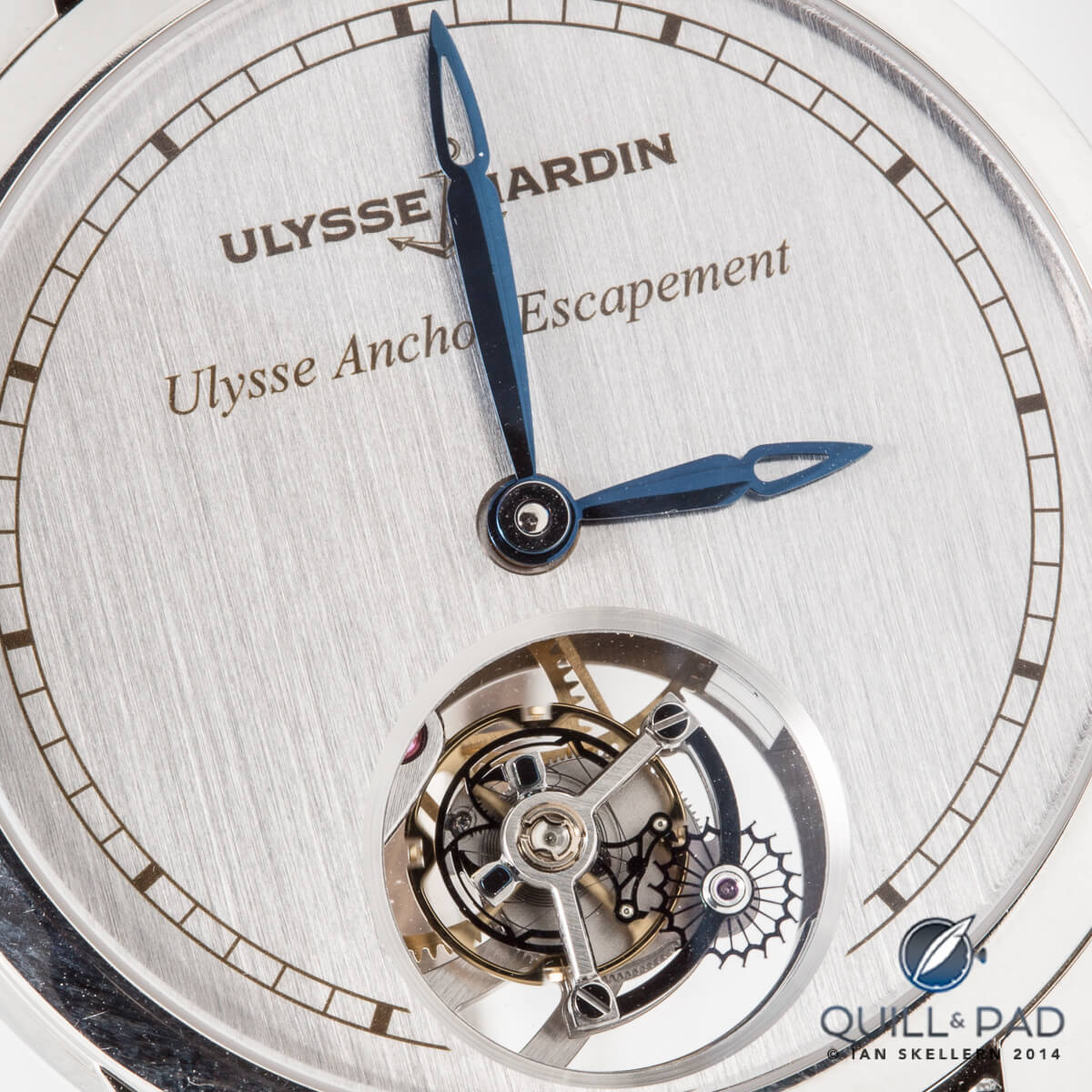


Trackbacks & Pingbacks
[…] part is basically a conglomeration of the Dual Ulysse Escapement, the Ulysse Anchor Escapement (see Anchors Away: Ulysse Nardin Makes The Anchor Escapement Viable For The Wristwatch), and a constant force escapement all rolled into one new […]
[…] Ochs und Junior, Ludwig Oechslin. The MIH watch, the Ulysse Nardin Astrolabium Galileo Galilei, the Ulysse Nardin Dual Direct escapement, and every Ochs und Junior timepiece are evidence of his passion for simplifying complexity while […]
[…] At Baselworld 2014, the Le Locle-based brand did something unprecedented in the world of watches: as its main fair introduction, it introduced a mechanism that the brand had been developing for eight years. Not a watch and not even a whole movement. A mechanism. An escapement (albeit fitted to a test movement in a watch). For more on that, please read Anchors Away: Ulysse Nardin Makes The Anchor Escapement Viable For The Wristwatch. […]
[…] highly technical and functional timepieces, including new releases at Baselworld 2014, please read Anchors Away: Ulysse Nardin Makes The Anchor Escapement Viable For The Wristwatch, 5 In-House Calibers From Ulysse Nardin, Ulysse Nardin’s Freak Blue Cruiser and Moonstruck Again: […]
[…] over to Quill & Pad for the full […]
Leave a Reply
Want to join the discussion?Feel free to contribute!